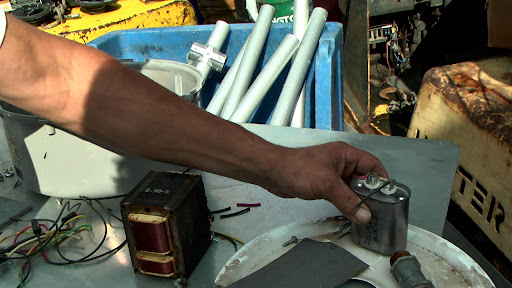Introduction to Ballast Recycling
Ballasts are essential devices used in lighting systems to control electrical current flow to the bulbs. As ballasts reach the end of their lifecycle, they require proper disposal or recycling to prevent environmental harm and recover valuable resources. But what exactly happens after collection? Understanding the journey of ballasts through the recycling process provides insights into how we manage electronic waste effectively.
Importance of Recycling Ballasts
Environmental Impacts
Improper disposal of ballasts can release hazardous substances into the environment. Ballasts, particularly older magnetic types, may contain PCBs (polychlorinated biphenyls), which are toxic chemicals. By recycling ballasts, we prevent these harmful substances from contaminating soil, water, and air, thus reducing pollution and health risks for both humans and wildlife.
Benefits of Resource Conservation
Ballasts contain valuable materials, such as copper, aluminum, and plastic, that can be reclaimed and repurposed. Recycling helps conserve these resources, reducing the need for mining and manufacturing new raw materials, which can be costly and environmentally damaging.
Types of Ballasts and Their Components
Magnetic Ballasts
Magnetic ballasts are older types that use a magnetic core and a coil to regulate current. They are commonly found in older fluorescent lighting systems. These ballasts may contain PCBs, making them hazardous and requiring special handling.
Electronic Ballasts
Electronic ballasts are more modern, efficient, and safer alternatives. They use electronic components to regulate current flow and are often smaller and lighter than magnetic ballasts. Due to the lack of PCBs, electronic ballasts pose fewer environmental risks.
Components within Ballasts
Both magnetic and electronic ballasts contain various components like metals (copper, aluminum), plastic casing, and sometimes capacitors. Proper dismantling and recycling of these components are essential to maximize resource recovery and ensure safe disposal.
Collection Process of Ballasts
How Ballasts are Collected
The recycling process begins with the collection of used ballasts. Businesses, facilities, and individuals drop off these ballasts at designated recycling centers or use pick-up services provided by certified recycling companies. Ensuring that collected ballasts are intact and safe to handle is crucial to prevent accidental exposure to hazardous materials.
Transportation and Safety Measures
Collected ballasts are transported to recycling facilities, following strict safety protocols to avoid contamination and spills. Specialized containers and trucks are used to transport ballasts, especially those containing PCBs, ensuring safe delivery to recycling plants.
Sorting and Inspection at Recycling Facilities
Initial Sorting Steps
Upon arrival at the recycling facility, ballasts undergo a preliminary sorting process. This step separates ballasts based on type, size, and condition. Magnetic and electronic ballasts are sorted separately since they contain different materials and require distinct recycling processes.
Detailed Inspection for Recyclable Materials
Technicians carefully inspect ballasts to determine if they contain recyclable metals, plastic, or any hazardous materials. This inspection helps identify the most effective and safest recycling method for each ballast type, maximizing recovery and minimizing waste.
Ballast Dismantling Process
Breaking Down Components
The dismantling process begins by breaking down the ballast into its individual components. Each component, such as metal coils, plastic casings, and capacitors, is separated for recycling or disposal. Specialized machinery is often used for dismantling, ensuring efficiency and safety.
Removal of Hazardous Materials
In the case of magnetic ballasts, any PCB-containing components are carefully removed and isolated. These hazardous materials require separate handling and disposal according to environmental regulations to prevent contamination and health risks.
Recovery of Recyclable Materials
Reclaiming Metals and Other Valuable Materials
Metals like copper and aluminum are reclaimed from dismantled ballasts. These metals are valuable and can be recycled into new products, reducing the need for virgin resources. The reclaimed metals undergo further processing, such as melting and purification, before being sold to manufacturers.
Recycling Plastic and Glass Components
Plastic casings and glass components are also collected and processed. Recycled plastics can be used in various products, and glass components, although less common, can be melted down and repurposed, contributing to sustainable resource management.
Disposal of Non-Recyclable Parts
Safe Disposal Methods
Not all components in a ballast can be recycled. Non-recyclable parts, such as certain hazardous residues, are safely disposed of through specialized waste disposal methods. Facilities use approved containment and disposal techniques, such as incineration or landfilling in designated hazardous waste sites, to ensure environmental safety.
Government Regulations on Disposal
Disposal of non-recyclable ballast parts is regulated by government agencies, like the EPA in the United States, which enforces strict standards to prevent pollution. Certified recycling facilities must adhere to these regulations, ensuring safe disposal practices that protect the environment and public health.
Environmental Safety and Compliance Requirements
EPA Regulations for Ballast Recycling
The Environmental Protection Agency (EPA) has established guidelines for the safe recycling and disposal of ballasts, particularly those containing PCBs. These regulations help ensure that recycling practices are environmentally sound, preventing harmful emissions and preserving ecological balance.
Compliance with International Standards
In addition to local regulations, recycling facilities may comply with international standards, such as those set by the Basel Convention, which governs the transboundary movement of hazardous wastes. Compliance with these standards ensures responsible recycling practices globally, reducing the risk of illegal dumping and environmental degradation.
Benefits of Ballast Recycling for Businesses
Cost Savings and Sustainability
Recycling ballasts can provide cost savings for businesses by reducing disposal fees and providing potential revenue from reclaimed materials. Additionally, sustainable practices enhance a company’s reputation, attracting eco-conscious clients and customers.
Reducing Carbon Footprint
By recycling ballasts, businesses contribute to lowering greenhouse gas emissions. Recycling materials require less energy than producing new materials from scratch, leading to a reduced carbon footprint and supporting environmental sustainability efforts.
Challenges and Limitations of Ballast Recycling
Technical and Logistical Challenges
Recycling ballasts poses technical challenges, particularly with older magnetic ballasts that contain hazardous materials. The dismantling process requires specialized equipment and trained personnel, adding complexity and cost to the process.
Economic Considerations
While ballast recycling is beneficial, it can be costly. The need for specialized handling, transportation, and disposal of hazardous materials increases operational expenses, which can limit access to recycling options for smaller businesses or facilities.
Innovations in Ballast Recycling
Advances in Recycling Technology
Technological advancements have made the ballast recycling process more efficient. New machinery and techniques for dismantling and reclaiming materials allow for faster processing and better recovery rates, reducing waste and environmental impact.
New Uses for Recycled Ballast Materials
Innovative uses for recycled ballast materials include using reclaimed metals in manufacturing and repurposing plastics in various industries. These new applications enhance the economic viability of recycling, creating additional value from discarded materials.
Future of Ballast Recycling
Industry Trends and Predictions
As technology advances and environmental awareness grows, the ballast recycling industry is expected to expand. Emerging trends include stricter regulations on ballast disposal and increased incentives for companies that implement sustainable practices.
How Consumers and Businesses Can Help
Consumers and businesses play a role in promoting ballast recycling by choosing certified recycling options and supporting companies that prioritize environmental responsibility. By opting for eco-friendly practices, individuals and organizations can help drive the demand for sustainable recycling solutions.
Frequently Asked Questions (FAQs)
What are the main components found in ballasts?
Ballasts contain a mix of metal coils, plastic casings, capacitors, and sometimes hazardous materials like PCBs. These components vary depending on whether the ballast is magnetic or electronic.
Why is it important to recycle ballasts properly?
Proper recycling prevents hazardous materials from polluting the environment and allows valuable resources to be recovered and reused, supporting sustainable resource management.
How does the ballast recycling process affect the environment?
The recycling process minimizes environmental harm by preventing toxic substances from entering the ecosystem and reducing the need for raw material extraction, which conserves resources and energy.
Are there specific laws regulating ballast disposal?
Yes, agencies like the EPA have regulations governing the disposal of hazardous ballast components. Certified recycling facilities must adhere to these regulations to ensure safe and environmentally friendly disposal.
What are the benefits of ballast recycling for businesses?
Businesses benefit from reduced disposal costs, potential revenue from reclaimed materials, and an enhanced reputation for supporting sustainable practices, which can attract environmentally conscious customers.
How can I find a certified ballast recycling facility?
Certified recycling facilities are often listed online, and businesses can reach out to waste management companies specializing in electronic waste to find a local option.
Conclusion
Ballast recycling is a crucial process that protects the environment, conserves resources, and supports sustainability. By understanding what happens after collection, we gain insight into the steps involved in responsible recycling and the benefits it brings to individuals, businesses, and society as a whole. As we continue to prioritize sustainable practices, ballast recycling remains a vital part of our journey towards a greener future.









